The Cherry Park Landscape Design and Preservation Studios embarked on an inspiring journey to a public park, nestled on the banks of Nigeen Lake in Srinagar, Kashmir. The studio looked at ways to restore ecosystems, preserve historical elements, and integrate interpretation, all while embracing sustainable practices and native plantings.
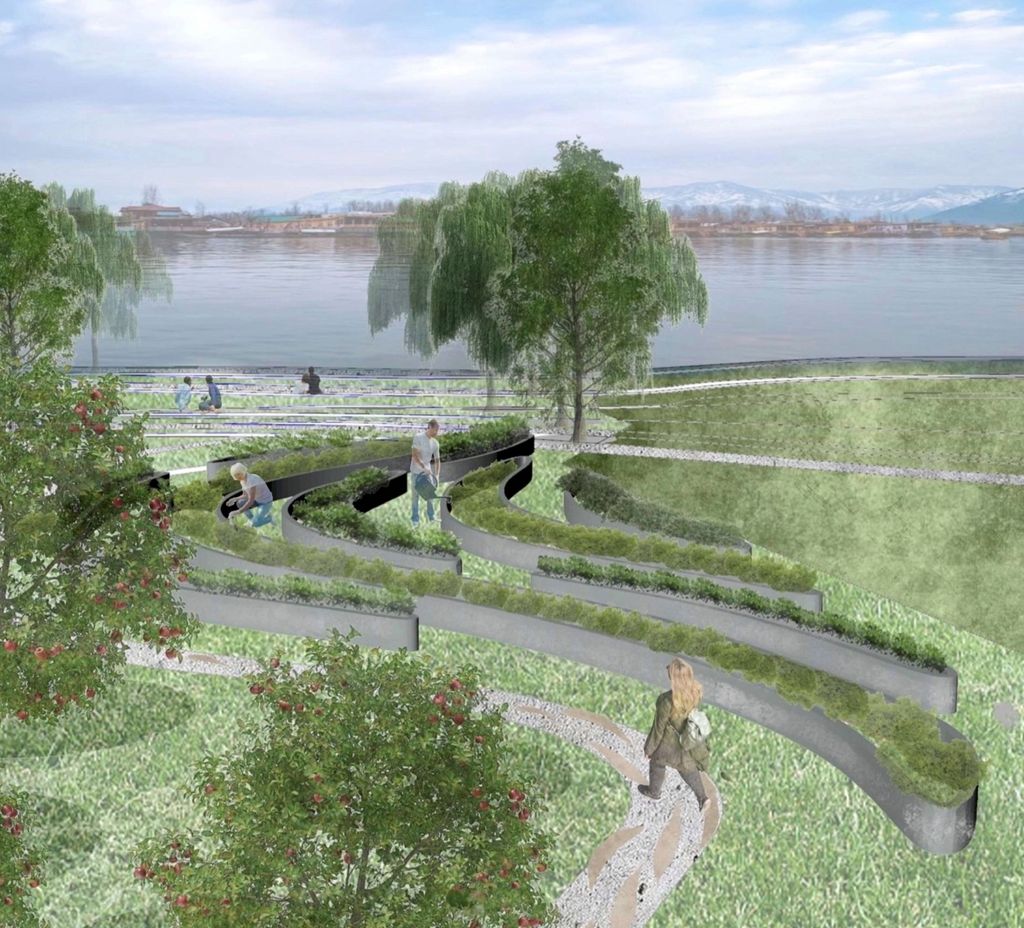
Our Landscape Design and Preservation Studios introduce students to design in the context of a historical landscape. They provide an introduction to documenting sites to inform design; developing concept proposals; and exploring design techniques and modes of representation. These recurring studios engage Boston University students of the College of Fine Arts, the Architectural Studies concentration, and Preservation Studies. They collaborate with local organizations and communities.
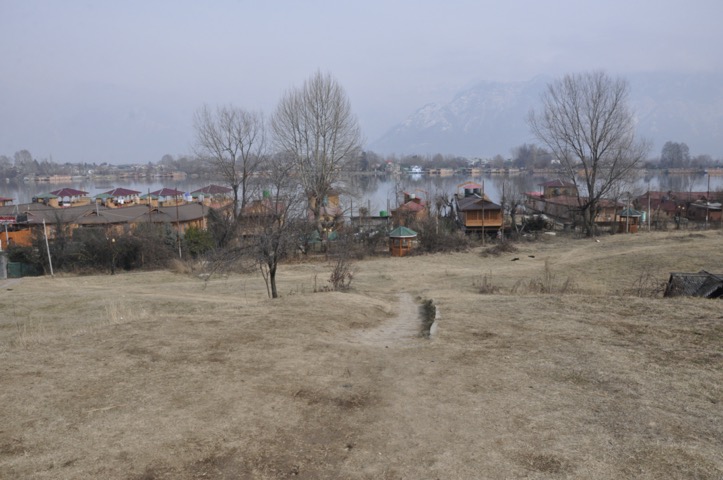
The studio on Cherry Park brought together thirteen talented students with diverse academic backgrounds, including architecture, painting, and biology, collaborating to develop ideas to revitalize the park and create a valuable community and visitor experience. Throughout the semester, the students meticulously analyzed the evolution and landscape characteristics of Cherry Park, its surroundings, existing conditions and challenges.
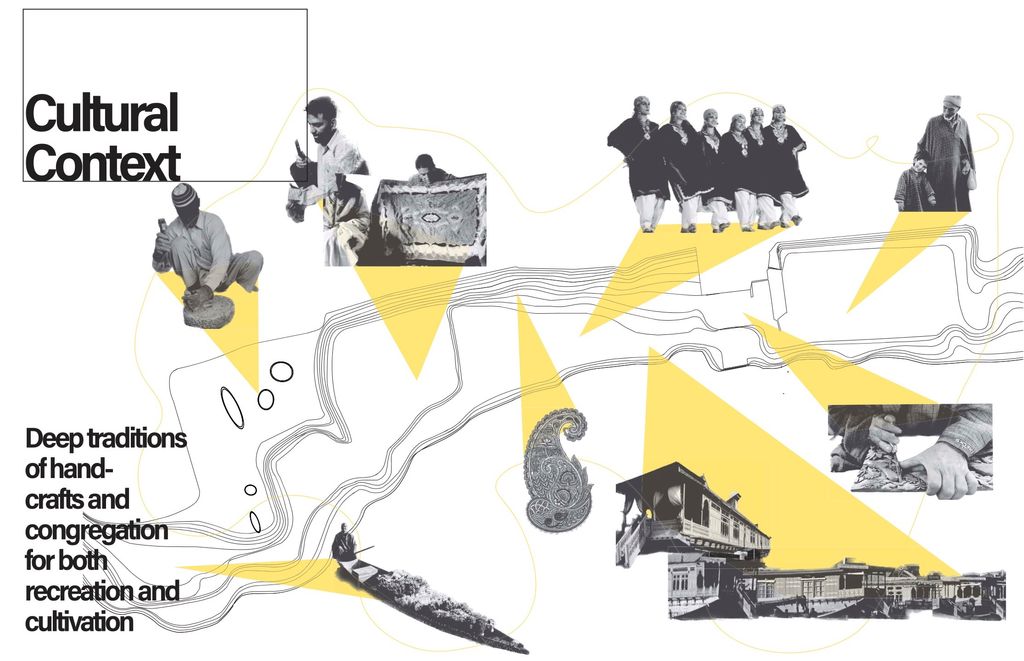
They studied the district’s historical background and tradition of seventeenth-century Mughal and later post-Mughal gardens on the banks of Dal lake and Nigeen lake, and presence of British-India era changes to the area. This includes the early-twentieth century establishment of a leprosy hospital in the former Mughal bagh to the south of Cherry Park at a time of promotion of education and healthcare in the valley.
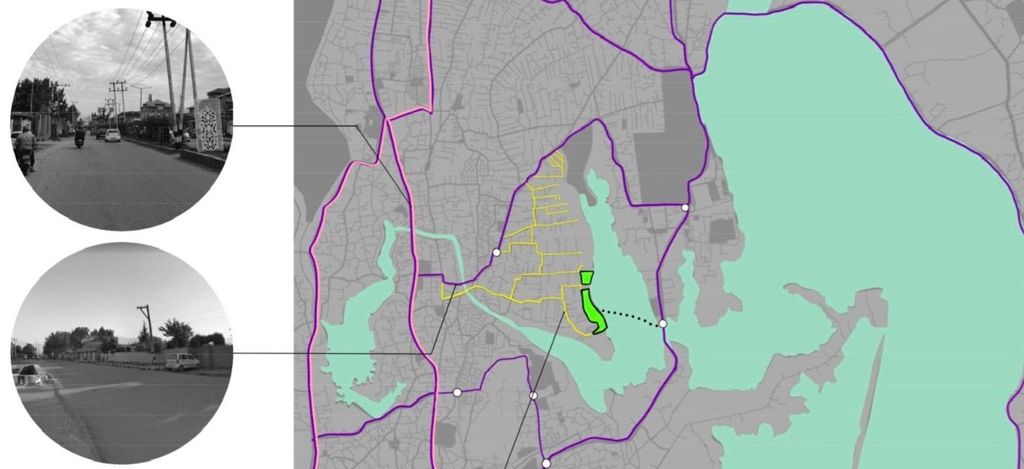
The students also reviewed how the subsequent master plans of the 1970s shaped the status of the lakefronts around Nigeen lake. Pomegranates were common on the banks of Nigeen lake and the park earned its name due to the abundance of cherry trees that once adorned its grounds. However, the landscape faced challenges over the years. Illegal removal of soil and orchards has led to significant changes in the topography and vegetation, and dense urban construction encroached on its suburban landscape.
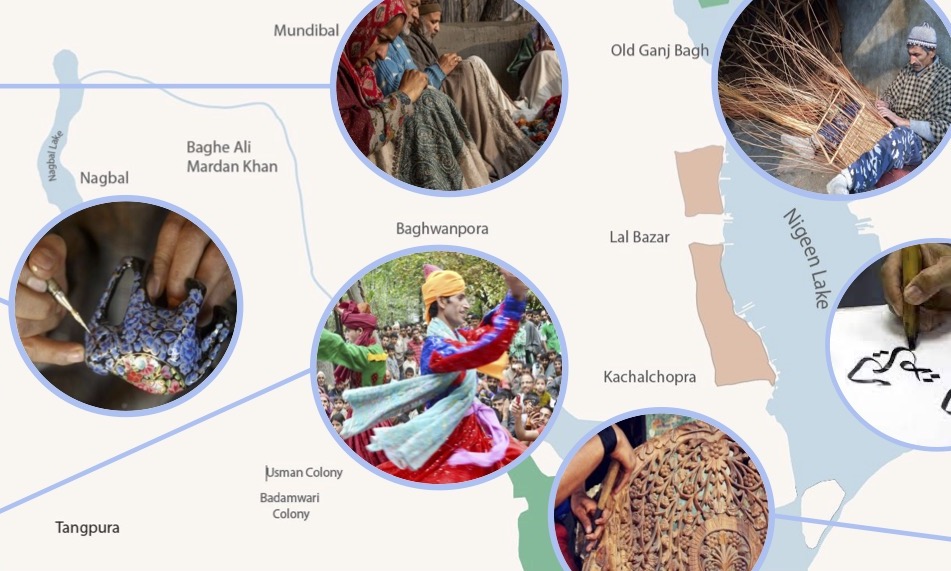
Students recognized the significance of preserving the park’s historical elements, such as the unique lakefront houseboats that emerged in nineteenth-century Kashmir as the British were prohibited from owning land in Kashmir. These houseboats became iconic symbols of the region’s cultural heritage and tourism, and also found their way to Nigeen lake in the twentieth century. The students were dedicated to their conservation.
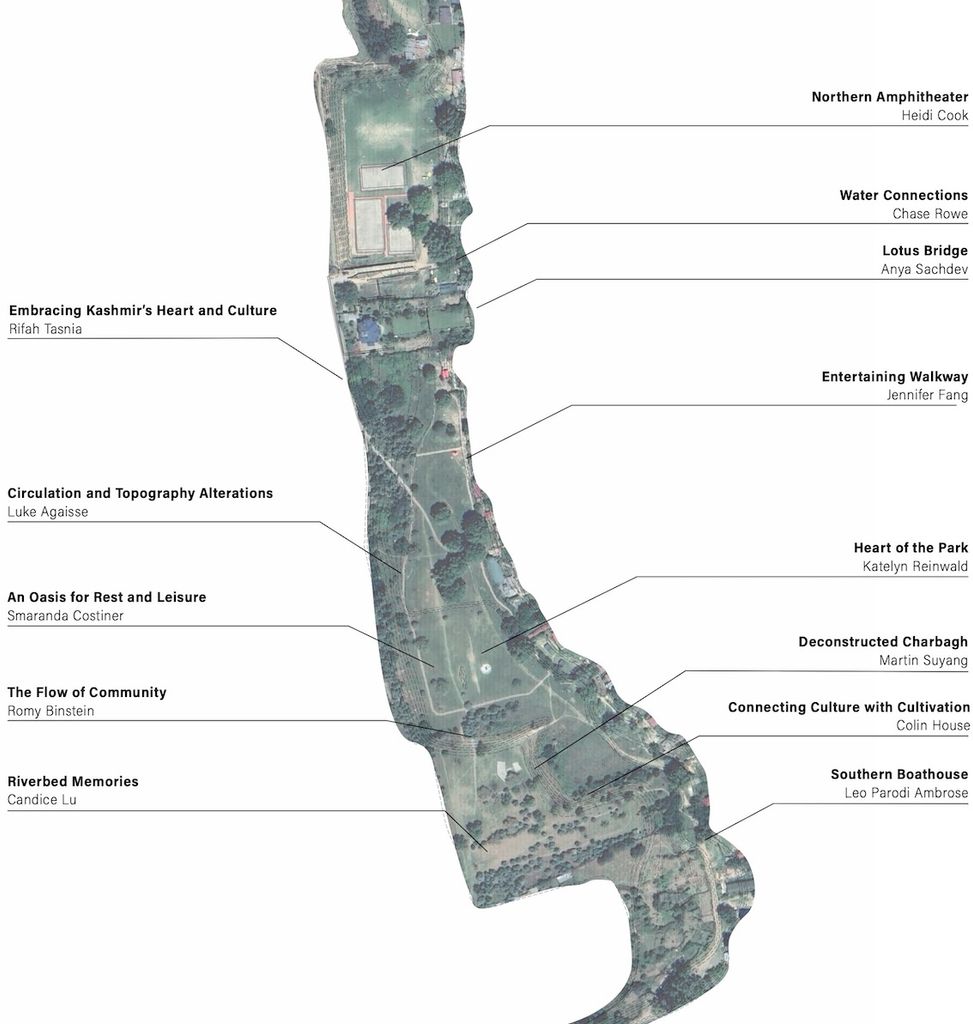
Cherry Park opened its doors in 2009 and quickly became a popular neighborhood park. Sadly, over the past decade the park fell rapidly into dereliction. Stray dogs and a recent increase of drug use in the park contributed to a sense of unease among visitors, while the lack of commercial activities and nearby food establishments limited the park’s amenities.
At the heart of the studio’s mission was the importance of the process of landscape design with the understanding of historic preservation. Students were introduced to steps of the design phases from initial team work on a study of landscape characteristics and local heritage and craftsmanship, to the creation of individual design suggestions at anchors in the park. Their designs prepared sketch concepts, ideas for material and planting palettes, sample sections and technical details, and refined final proposals.
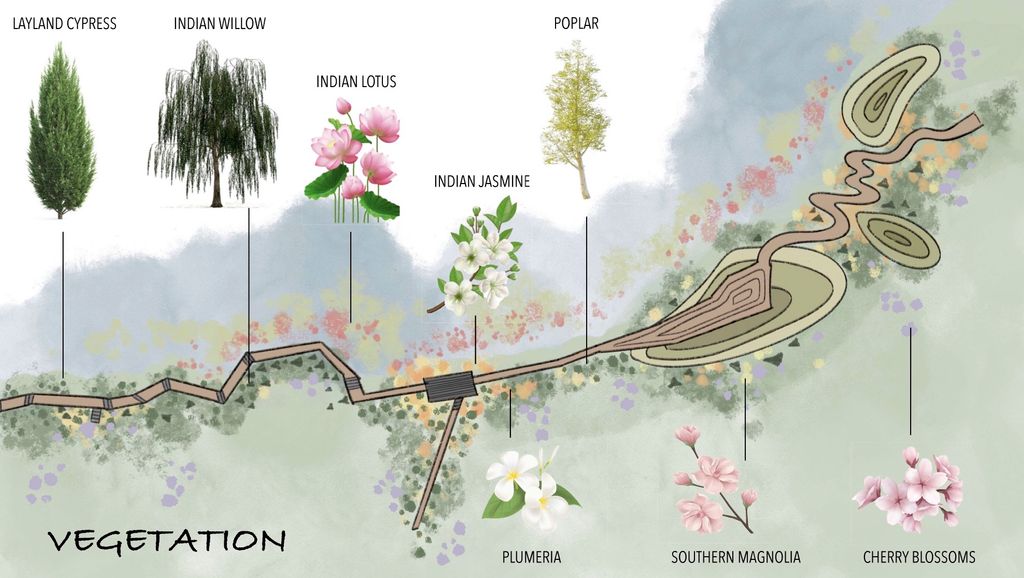
The studio’s vision went beyond restoration and preservation. By incorporating impermanent structures and storytelling, the students sought to deepen the connection between visitors and the park’s rich history, ecology, and traditional horticultural and architectural practices. Through their innovative proposals, the students aspired to develop concept ideas to breathe new life into Cherry Park, transforming it into a harmonious blend of thriving ecosystems, preserved heritage, and immersive interpretation.
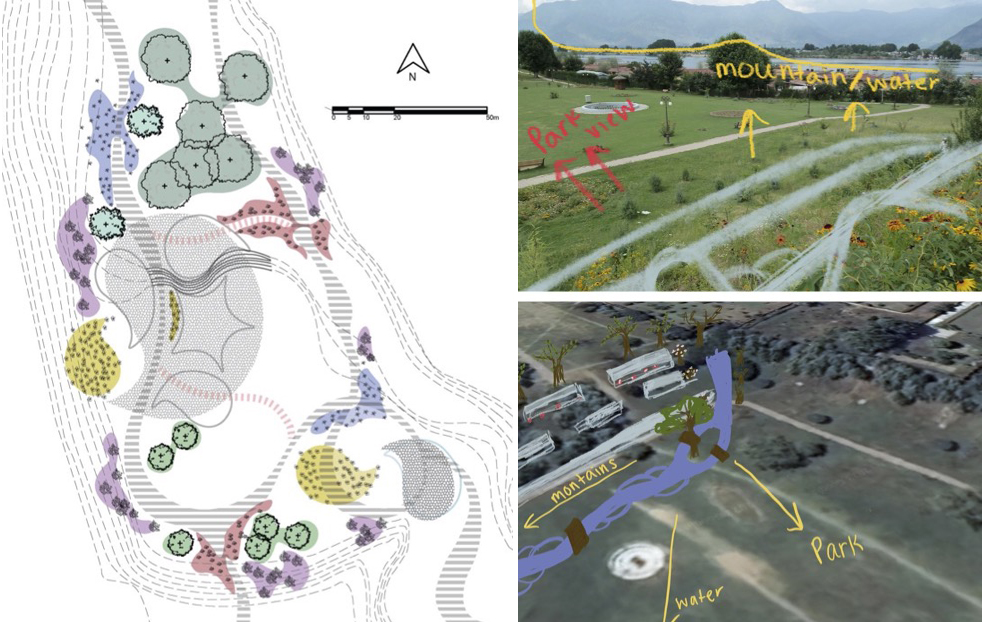
Additionally, students explored sustainable practices and native plantings to enhance biodiversity and create a thriving habitat that resonates with the local flora and fauna. While significant heritage, the houseboats created a barrier between the park and waterfront and impacted local ecology and vegetation.
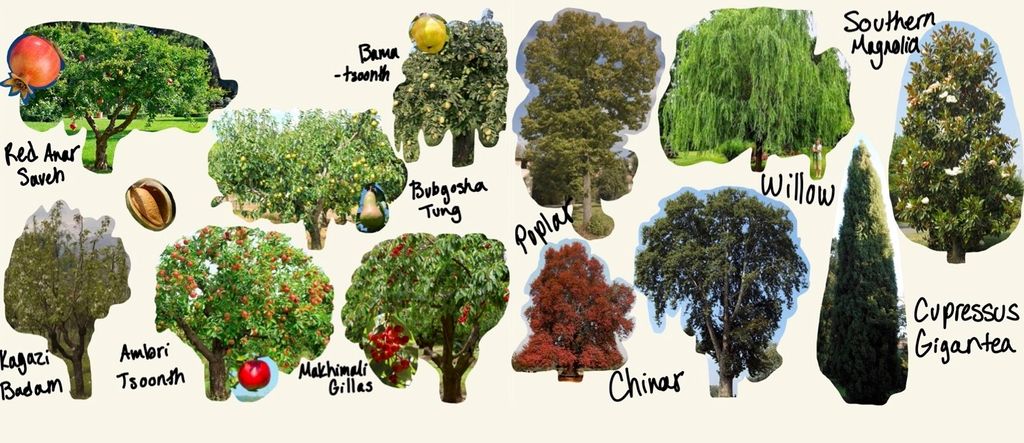
The students recognized the need to protect the ecology and reintroduce native plant varieties that had been lost. The city’s Land Use Plans are considering a degree of relocation of houseboats and students explored creative ideas to address improvements to ecology and the connection between the park and lake.

With dedication and passion, the students worked tirelessly to present cohesive design proposals that celebrated Cherry Park’s uniqueness. The remote studio format means suggestions are only explorative, and local initiatives are envisioned to build on the studio outcomes. Their designs included attraction points or anchors, guided pathways, planting suggestions, and innovative landscape architectural elements, all aimed at enhancing the visitor experience, community use, and creating a sense of place.

As you peruse images here, you will witness the remarkable work done by the studio’s students. Their proposals, illustrated with captivating visuals, offer a glimpse of their inspirational ideas for the revitalization of Cherry Park—a place where thriving ecosystems, preserved heritage, and immersive interpretation intertwine to create an extraordinary destination. Additional information will soon be made available on a new website page under the Preservation Studies Program.

We extend our heartfelt gratitude to the individuals and organizations that supported the studio’s exploration. Their expertise and guidance greatly enriched the students’ understanding and appreciation of landscape design.
Credits:
The material presented is the work of Anya Sachdev, Candice Lu, Chase Rowe, Colin House, Heidi Cook, Jennifer Fang, Katelyn Reinwald, Leo Parodi Ambrose, Luke Agaisse, Martin Suyang, Rifah Tasnia, Romy Binstein and Smaranda Costiner.
Photographs by Jan Haenraets and Hakim Sameer Hamdani.
Special thanks to our panel of reviewers for the pinups: Anas Soufan, Kristen Dahlmann, Hakim Sameer Hamdani and Aaron Ahlstrom. The course instructor was Jan Haenraets, Preservation Studies Program, Boston University.
The studio is particularly grateful to Hakim Sameer Hamdani of the Indian National Trust for Art and Cultural Heritage (INTACH), Jammu and Kashmir Chapter for providing guidance and resources throughout the studio; Alyssa Schwann and Atelier Anonymous–Global Landscape Foundation for the design guest lecture and support.
Our thanks to our colleagues at the College of Fine Arts & College of Arts, and Sciences; School of Visual Arts; Architectural Studies; and Preservation Studies.
Text, design and layout of the studio workbook with all student proposals by Colin House and Jan Haenraets.
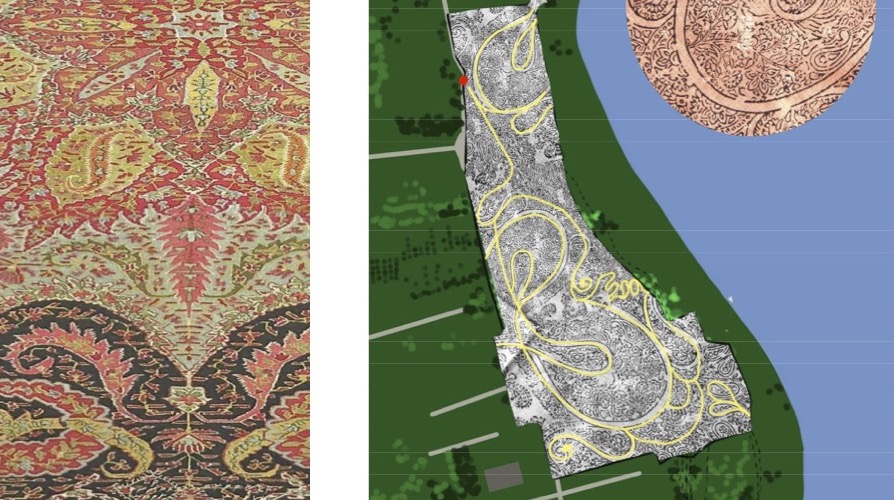
Citation Workbook:
We welcome everyone to explore the studio material. When reusing parts we recommend this citation:
Jan Haenraets (ed.) and Colin House. “Cherry Park, Nigeen Lake, Srinagar, Kashmir: Preservation and Transformation.” Student Workbook, Landscape Design and Preservation Studio, Spring 2023, Boston University.